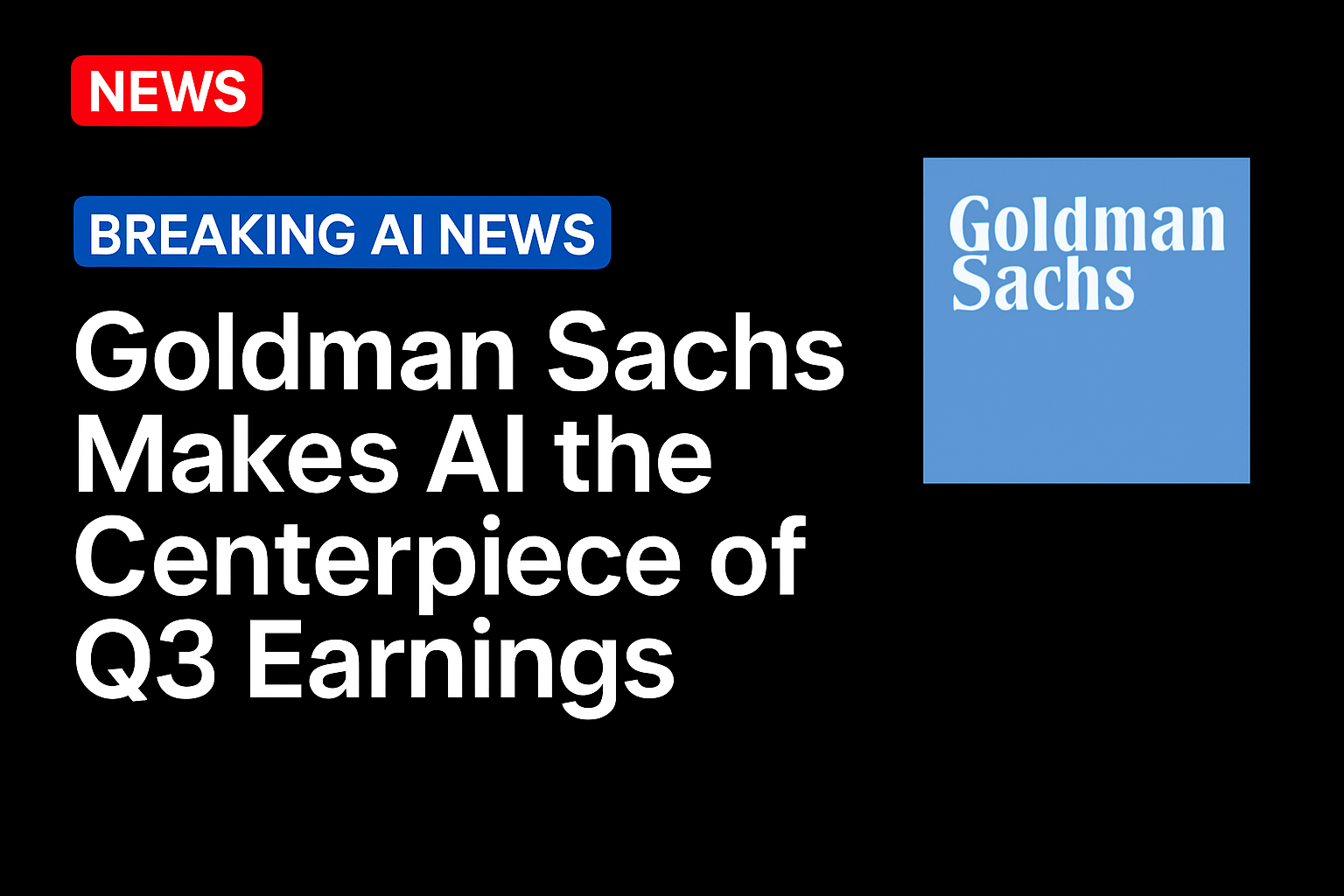Now even earnings numbers are taking a back seat to artificial intelligence (AI). In a dramatic turn of events Tuesday (Oct. 14), Goldman Sachs used its third‑quarter earnings announcement to unveil “One Goldman Sachs 3.0.” It’s a more centralized operating model built around AI.
Management said the multiyear push will reengineer front‑to‑back processes, starting with sales enablement and client onboarding, and extend to lending workflows, regulatory reporting and vendor management. The goal: measurable efficiency, scale and risk control, with progress markers promised on the January call. The move comes as CEO David Solomon warned that today’s market exuberance, much of it “fueled by … investment in AI infrastructure,” requires disciplined risk management.
“Propelled by AI, this is a new, more centralized operating model that we expect to drive efficiencies and create capacity for future growth,” Solomon said.
In the analyst Q&A, Solomon emphasized that 3.0 isn’t a turnaround plan but a technology‑driven redesign made possible by recent advances. “The technology actually allows you to take a fresh look front-to-back at certain operating processes and really reimagine,” he told analysts, adding that automation should free up resources to reinvest in growth.
CFO Denis Coleman echoed that AI is central to an ongoing efficiency agenda and said the firm will hold itself accountable with clearer metrics over the next two quarters. Management listed six yardsticks for the program: client experience, profitability, productivity/efficiency, resilience/scale, employee experience and risk management. Executives underscored that the initiative is intended to change how Goldman runs, not just how it trades.
Signals on the consumer were mixed. Provision for credit losses was $339 million, “primarily” reflecting net charge‑offs in its credit card portfolio, a reminder that card credit normalization remains a drag even as the provision trended down sequentially (the firm’s Provision for Credit Losses panel shows $339 million for the quarter). Platform Solutions revenue rose to $670 million, with $599 million from consumer platforms, though the year‑over‑year jump largely reflects lapping a loss tied to the GM card that has since been exited.
Solomon reiterated that credit cards are not a go‑forward focus for Goldman. The GM program is gone and there was no new timetable for Apple Card. Taken together, the comments and credit costs point to a cautious posture on mass‑market consumer exposure even as the firm leans into payments‑adjacent B2B activities.
Numbers took a back seat to strategy, but they provide context. Goldman posted EPS of $12.25 on $15.18 billion in net revenue, for a 14.2% ROE. The firm returned $3.25 billion to shareholders, including $2 billion in buybacks, and the board declared a $4 dividend. Headcount ticked up 5% versus Q2 on campus hiring, while assets under supervision climbed to a record $3.5 trillion, helped by $56 billion in long‑term net inflows. Management expects to raise ~$100 billion in alternatives this year, which aims to tilt the mix toward more durable, fee‑ and financing‑based revenues.
Source: https://www.pymnts.com/




